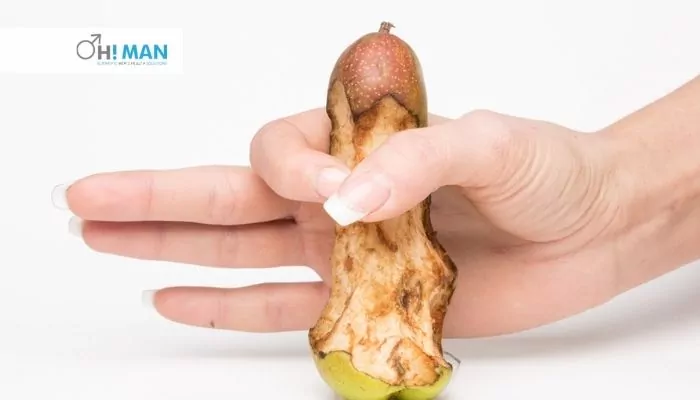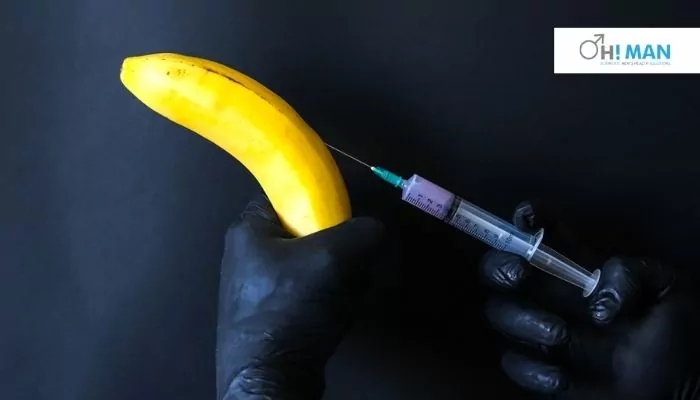Buried Penis: Causes and Ways to Treat Hidden Penis
Buried Penis: Causes and Ways to Treat Hidden Penis

Concerned about a buried penis? Here is everything to know about the buried penis, its causes, diagnosis and treatment.
A penis buried happens when fat and skin from the abdomen, scrotum or thigh cover penis tissue, making it obscured despite being not unusual in its size. In particular, it’s an area of the shaft and glans that aren’t evident.
While a buried penis is usually present from the time of birth, however, it can also appear any time during adulthood. A doctor is likely to detect a buried penis earlier; and it is possible to diagnose it earlier. It is distinct from a micropenis, which is a tiny penis.
Adult prevalence data are scarce. However, researchers warn that rising rates of obesity – a fundamental cause of a hidden penis — may imply that many individuals get the disorder later in life. Moreover, men with a buried penis, on the other hand, may not require medical help unless the issue seriously impairs their life quality.
The problem can be due to anomalies in the ligaments of the penis, morbid obesity, or scrotal enlargement. Additionally, a buried penis can cause physical and psychological issues; the condition treatment is possible surgically.
People also refer buried penis as a concealed, hidden, webbed, trapped or invisible penis. A buried penis can result in urinary problems and sexual dysfunction, in addition to causing lower self-esteem.
If you’re experiencing this buried penis syndrome, it’s worth noting. Since the occurrence of penis buried in older adults is an increasingly frequent issue.
Table of Content –
Buried Penis Causes
A buried penis can arise for a variety of reasons.
Congenital reasons include faulty penile shaft growth during foetal development, resulting in complications with the epidermis and fat layers around the penis.
The possible causes are :
- Too much scrotal skin connecting to the head of the penis, a huge fat pad covering the pelvic area and burying the penis
- Most of the time, a buried penis is because of fat deposition, inflammation, prolonged infection, or penile damage.
- Ligaments connecting the genitals to the body are unusually weak.
- Scrotal swelling due to an accumulation of lymph fluid (lymphedema) can conceal the penis.
- Other probable reasons include obesity, lichen sclerosus, hidradenitis suppurativa, infections, penoscrotal lymphedema, traumatic experiences, and failed surgical operations such as circumcision.
The syndrome does not considered to be inherited or associated with a person’s hormonal levels.

Complications
A hidden penis can cause urination issues in guys of any age. Urine commonly makes contact with the scrotum or thighs. As a result, skin irritation and urinary tract infections are possible. Additionally, the skin of the penis might become irritated. Balanitis and other infections are also widespread as a result of poor hygiene.
A hidden penis could make obtaining an erection challenging for teenage and adult males. Even if an erection is achievable, penetrative sex may be challenging. Males with hidden penis frequently experience psychological issues such as poor self-esteem, performance anxiety, and sadness.
Diagnosis
A physical examination is generally helpful in diagnosing a buried penis. Your doctor must be able to distinguish between a buried penis and micropenis, which is a tiny penis. Visit a physician if you or your youngster exhibit signs of a hidden penis.
Buried Penis Treatment
Buried penis can be challenging to cure in children and adults alike, and the underlying reason determines treatment. In newborns and toddlers, the buried penis syndrome may resolve spontaneously.
If adult males develop a buried penis or if that does not resolve spontaneously in infants, surgery may be necessary. Because each circumstance is unique, no one surgical procedure applies to every patient. However, there are other forms of surgery:
- Scar tissue removal.
- Detach the ligament connecting tp the penis bottom to the pubic bone.
- Suction lipectomy or the surgical removal of fat deposits by using suction catheters implanted through small incisions.
- Abdominoplasty, or “tummy tuck,” is a technique for removal of fat and tissue from the abdomen area.
- Panniculectomy, or the elimination of extra skin and visceral fat that drapes over the private parts and/or thighs.
- Escutheonectomy, or fat pad disposal above the pubic region.
- Skin grafts fill parts of the penis with insufficient skin covering.
- Sutures are connected internally at the end of the penis during buried penis repair.

Some other possible methods for the buried penis treatment:
- Medication: A doctor may recommend medication if a buried penis has resulted in infectious disease in the genital area.
- Losing weight: Obese individuals normally are urged to reduce weight before surgery. Although weight loss on its own is not probable to address the problem, it can make difficulties during or after the procedure less probably. Patients undergoing surgery may benefit from weight loss and dietary counselling.
- Psychological counselling: Mental health specialists may treat concerns such as anxiety, sexual dysfunction and poor self-esteem.
Treatment Outlook
Successful surgery can significantly improve the quality of life for a person with a buried penis. Urination and sexual dysfunction problems like erectile dysfunction and premature ejaculation are frequently resolved. A few weeks are generally sufficient to restore the penis’s look if skin grafts are required.
Once addressed, the problem is unlikely to recur in any form. If obesity or another controllable disease has a role in undergoing surgery, it will be imperative to maintain a healthy lifestyle and overall health following the procedure. Additionally, you should clarify good genital cleanliness with your doctor and any indication of treatment difficulties or side effects.
Final Say
A buried penis is a medical term that refers to a syndrome wherein the penis is of normal size but is hidden behind extra skin and fat. Although the condition is often present from birth, it can also develop over time in life due to overweight, inflammation, failed surgery, or trauma.
Obstruction of the penis can impair its functioning, resulting in problems urinating and sexual enjoyment. Additionally, it may raise the risk of infection and detrimentally affect an individual’s mental health. Typically, a doctor may identify a hidden penis by a medical examination.
A buried penis is typically treated with surgery to increase the prominence of the penis by eliminating excess tissue and conducting penile reconstruction in some cases. If you still have any doubts about buried penis or its treatment then you can contact ohman’s experts for proper guidance and clear your all doubts. Ohman is online portal for resolving men sexual health issues and provide expert treatment and FDA approved medicines like PDE5 Inhibitors and buy the Best penis enlargement medicine in India.
reference – https://pubmed.ncbi.nlm.nih.gov/9915425/



